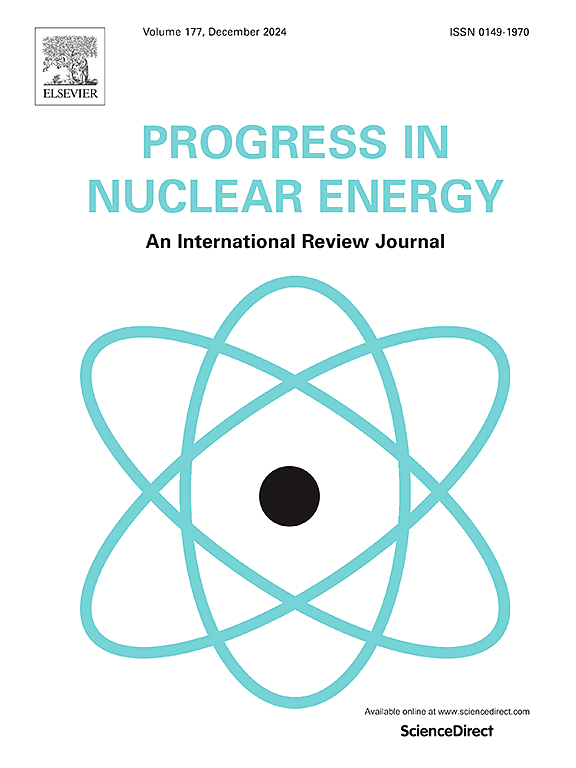Experimental study on heat transfer characteristics of subcritical carbon dioxide in a vertical tube
IF 3.3
3区 工程技术
Q1 NUCLEAR SCIENCE & TECHNOLOGY
引用次数: 0
Abstract
Research is actively being conducted globally to investigate the supercritical carbon dioxide (S-CO2) Brayton cycle which is considered a highly promising energy conversion system. During startup, load change, or shutdown processes, the system experiences subcritical pressure conditions where the phase change of carbon dioxide (CO2) may occur. Understanding these heat transfer characteristics becomes particularly crucial as the system transitions through subcritical regions, where abrupt property variations and phase change effects could significantly impact operational stability and safety. To address these challenges, the heat transfer properties of subcritical CO2 in a vertically arranged tube with a heated length of 750 mm and a diameter of 4 mm were investigated in this work. The effects of heat flux, pressure, and mass flux on the heat transfer characteristics were analyzed. Results indicated that with increased heat flux, heat transfer deterioration (HTD) occurs, leading to a peaky wall temperature. Increasing pressure reduces the surface tension of CO2 leading to earlier HTD. Additionally, higher mass flux slightly improves heat transfer coefficient under saturated boiling. Four correlations were selected to estimate the accuracy of predicting the heat transfer coefficient by the test result. The Fang correlation (Fang, 2013) was shown to exhibit the most accurateness than other correlations considered with average deviation and standard deviation of 2.42 % and 43.98 %, respectively. Improved predictions in the heat transfer coefficient were achieved by fitting a new coefficient based on the Fang correlation The critical heat flux to trigger HTD was obtained, and an empirical correlation was proposed.
求助全文
约1分钟内获得全文
求助全文
来源期刊

Progress in Nuclear Energy
工程技术-核科学技术
CiteScore
5.30
自引率
14.80%
发文量
331
审稿时长
3.5 months
期刊介绍:
Progress in Nuclear Energy is an international review journal covering all aspects of nuclear science and engineering. In keeping with the maturity of nuclear power, articles on safety, siting and environmental problems are encouraged, as are those associated with economics and fuel management. However, basic physics and engineering will remain an important aspect of the editorial policy. Articles published are either of a review nature or present new material in more depth. They are aimed at researchers and technically-oriented managers working in the nuclear energy field.
Please note the following:
1) PNE seeks high quality research papers which are medium to long in length. Short research papers should be submitted to the journal Annals in Nuclear Energy.
2) PNE reserves the right to reject papers which are based solely on routine application of computer codes used to produce reactor designs or explain existing reactor phenomena. Such papers, although worthy, are best left as laboratory reports whereas Progress in Nuclear Energy seeks papers of originality, which are archival in nature, in the fields of mathematical and experimental nuclear technology, including fission, fusion (blanket physics, radiation damage), safety, materials aspects, economics, etc.
3) Review papers, which may occasionally be invited, are particularly sought by the journal in these fields.
 求助内容:
求助内容: 应助结果提醒方式:
应助结果提醒方式:


